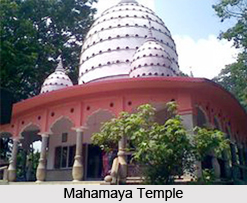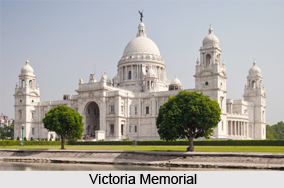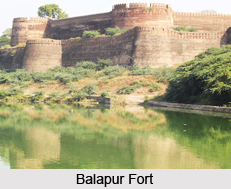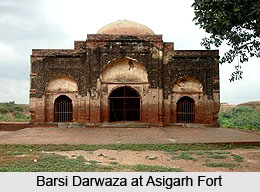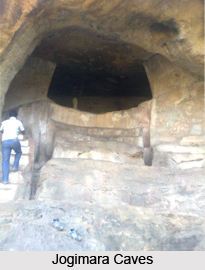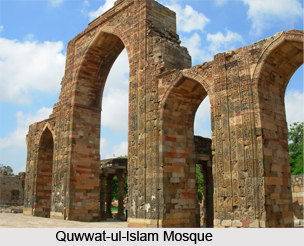 Quwwat-ul-Islam mosque was built by Qutub-ud-din Aibak, founder of the Mamluk dynasty. In AD 1192, Muhammad, the Sultan of the mountain kingdom of Ghur in modern Afghanistan, led a fierce force down into the fertile plains of northern India. After the conquest Muhammad Ghori went back to his homeland leaving the reigns in the hands of Aibak, his trusted army commander.
Quwwat-ul-Islam mosque was built by Qutub-ud-din Aibak, founder of the Mamluk dynasty. In AD 1192, Muhammad, the Sultan of the mountain kingdom of Ghur in modern Afghanistan, led a fierce force down into the fertile plains of northern India. After the conquest Muhammad Ghori went back to his homeland leaving the reigns in the hands of Aibak, his trusted army commander.
Holding sway over an unruly land of alien faith, Qutbuddin sought to leave the imprint of his religion on the new territory. He decided to erect a mosque epitomising the quwwat or might of Islam and chose as his site, the heart of the captured Rajput citadel of Qila Rai Pithora.
The mosque is a simple rectangle enclosing a central quadrangular court. It measures some 65.2 metres by 45.4 metres externally. The courtyard is surrounded by pillared cloisters with steps on the north, east and south sides that take one into the porches, noteworthy for their resplendently-carved temple ceilings.
The gateways on the north and the east have inscribed lintels recording in Naskh characters the circumstances of the construction of the mosque. The date of completion of the mosque is recorded as 1198 AD on the north gateway, together with the name of Muhammad Ghori. Inside the mosque, the sanctuary cloister to the west is four bays deep, while the colonnade on the east has three bays, and the remaining two sides, only two bays. Secluded accommodation for the zanana was provided at the two ends of the eastern colonnade in little mezzanine apartments reached by narrow staircases within the thickness of the enclosing wall.
The arcades in the Quwwat-ul-Islam Mosque are of great architectural interest. Constructed from the remains of Hindu temples, they attest to the ingenuity with which the despoiled material was reassembled by Hindu artisans to meet the demands of the Muslim rulers.
The pillars sport a range of Hindu iconography, from sculpted figures, lotus flowers, bells-and-chains, to kalasa vessels spouting flowering creepers, an abiding Brahmanical motif of abundance and overflowing prosperity.
Shamsuddin Iltutmish, slave successor of his master, Qutbuddin Aibak, ascended to the throne of Delhi between 1211-36. He added to the mosque`s scale and dignity. He almost doubled the size of the mosque in 1230 by extending its colonnades and prayer-hall outside the original enclosure, with the result that the Qutub Minar now fell within the mosque-enclosure.
Outer entrances in each of these three sides were made axial with those of the original mosque, and the great screen was extended north and south in continuation of Qutbuddin`s. The arches of Iltutmish`s screen are still principally corbelled, although their arabesque ornamentation with inscriptions standing out prominently is Saracenic in feeling, as distinct from the mixed decorations of Qutbuddin Aibak`s screen.
A later Delhi Sultan, Alauddin Khalji (1296-1316) again extended the mosque substantially by enlarging the enclosure. His contribution was to add two gateways on the eastern side and one each on the north and south -the last of which, the Alai Darwaza, is still extant.
